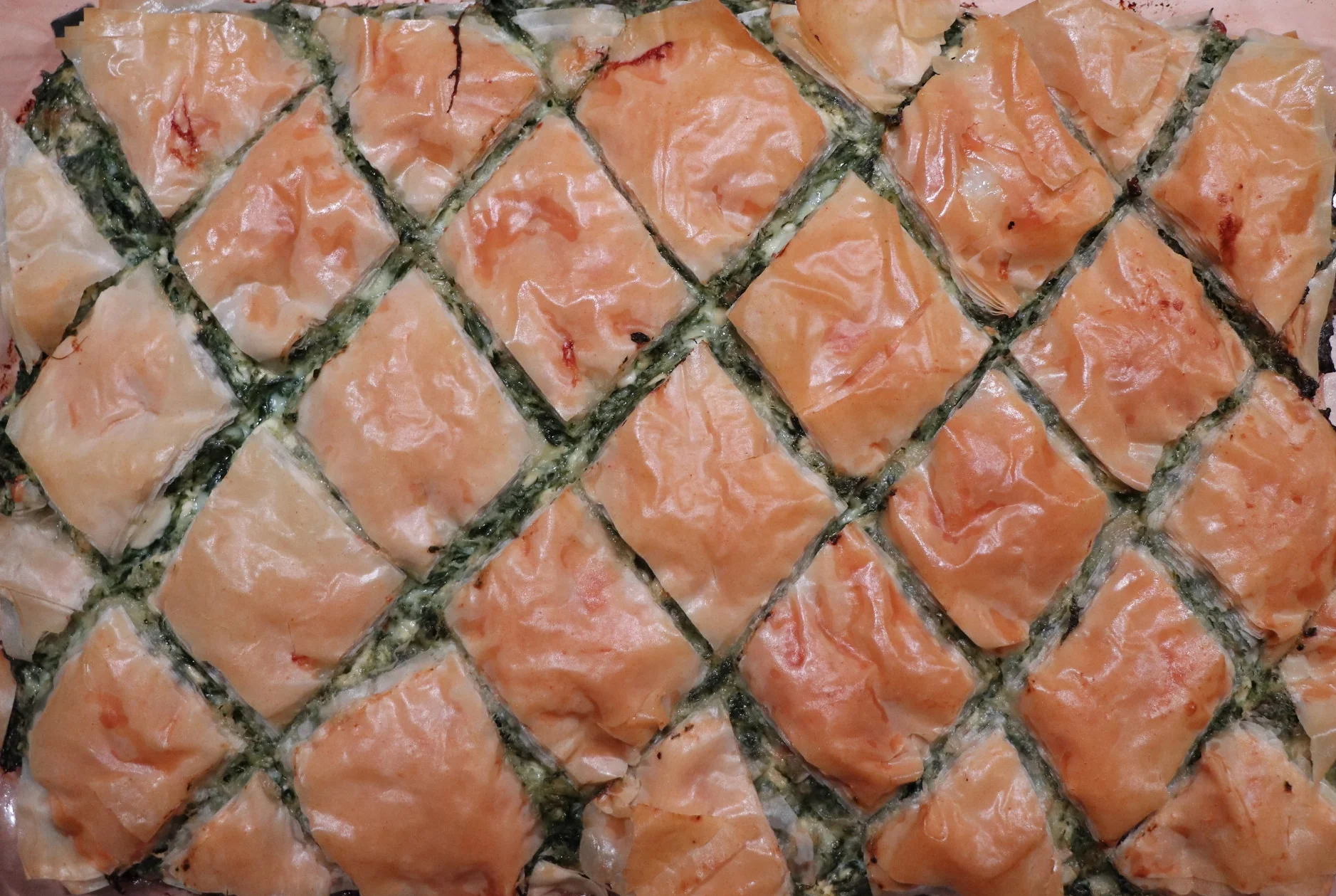Spanakopita
I had only recently graduated from college when one of my high school friends, Stacy, brought homemade Spanakopita to a party. It was the first time I ever tasted Spanakopita, or for that matter, phyllo dough. I don't remember much from that party, but what I do remember is how much my boyfriend and I loved the Spanakopita. That boyfriend soon became my husband, and we still love Spanakopita to this day.
About fifteen years ago, I had Spanakopita at Cousin Jennie's house. She was my father's first cousin, but she was more like his aunt because she and my grandfather, Vito, grew up together like siblings. When Vito was 11, his mother died and then the following year, Vito's father, Domenico, moved back to Italy, leaving Vito with Italia, one of Vito's older sisters. This picture was taken the last time Vito saw his father.
Cousin Jennie was born Giovanina, but her family called her Jennie. Soon after, Jennie decided she preferred the name Jane, but my father always called her "Cousin Jennie," so my sister and I followed suit. Cousin Jennie grew up in the same Italian neighborhood as my father, but when she was 60 years old, she moved to Massachusetts (to be with her only son). I visited her often, and that's where I often enjoyed her Spanakopita. She made hers with cottage cheese, and I began adding it to mine as well because it added a desirable creaminess.
Spanakopita
Notes:
Phyllo (filo) is available in large sheets [14" x 18"(36x46 cm)... 20 sheets per box] or half sheets [9" x 14"( 23x36 cm)... 40 sheets per box] in the frozen foods section.
I prefer sheep milk feta, if available.
I recommend freshly grated Parmigiano-Reggiano (if you use pre-grated cheese, there will be a settling period and the cheese volume will be about half of what the recipe calls for). And please don't use Kraft's "Parmesan cheese."
I tend to only lightly brush the butter onto the phyllo, but I recommend increasing the butter quantity to 1½ sticks (6 ounces or 170 grams) if you prefer a richer dish.
The phyllo dries out when left exposed to the air, so cover with plastic wrap while working (or just work quickly). I don't cover with a damp towel, as this can make the phyllo stick together.
½ pound (227 grams) frozen phyllo (filo) dough (½ box: 10 large sheets or 20 small sheets)—thawed in the refrigerator overnight
10 tablespoons butter - 5 ounces or 142 grams - divided
1¼ cup (~ 6.3 ounces or 179 grams) chopped onion
10-15 ounces (283-425 grams) boxed or bagged frozen chopped spinach—thawed and squeezed dry
⅓ cup (~ 0.5 ounce or 14 grams) chopped parsley
⅓ cup (~ 0.5 ounce or 14 grams) chopped fresh dill
zest of 1 lemon (optional)
½ pound (227 grams) feta cheese—grated or crumbled
1 cup grated Parmigiano Reggiano - 1.5 ounces or 43 grams
½ pound or 510 grams whole milk cottage cheese
2 large eggs—beaten
½ teaspoon ground black pepper
kosher salt to taste
In a large skillet, sauté chopped onions in 2 tablespoons (28 grams) melted butter with ¼ teaspoon kosher salt, until soft (but not brown). Add the squeezed dry spinach, parsley, dill, ground pepper, and lemon zest. Simmer 3 minutes. Remove from heat. Add feta, Parmigiano, cottage cheese—and if cool enough—eggs. Mix well.
Preheat oven to 375°F (190°C). Melt 1 stick (8 tablespoons - 4 ounces - 113 grams) butter. Skim off and discard foam, avoiding the milk solids that settle on the bottom of the pan. Brush a 13" x 9" (33x23 cm) baking dish with melted butter. Place one sheet of phyllo dough in dish, and lightly brush/dab with butter. (If using the large sheets of phyllo, cut in half.) Continue stacking and dabbing until you have 10 layers. Spread the spinach filling on top, then stack the remaining 10 phyllo layers (still dabbing butter between each layer). Brush the top with remaining melted butter. With a sharp knife, score diagonally into diamond shapes ~2" (5 cm) wide (see picture). This allows the Spanakopita to rise and flake. Bake 45-50 minutes until golden brown and delicious. When serving, cut into squares rather than along the score lines.









